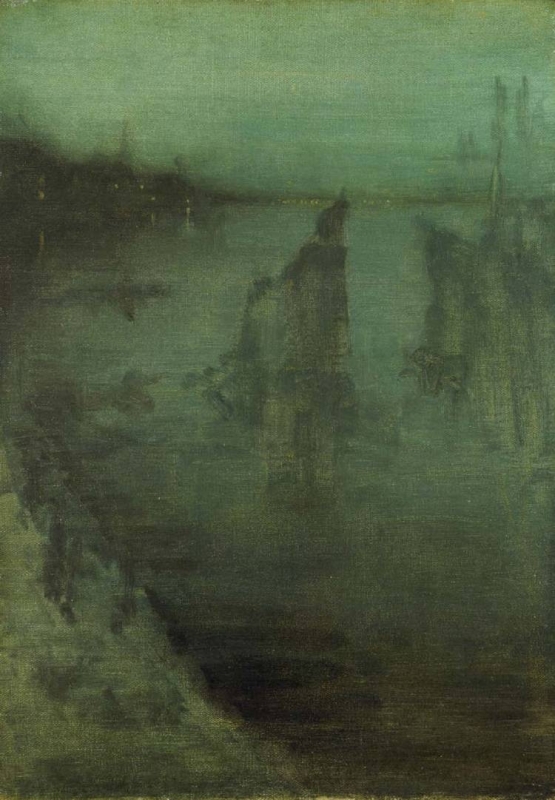Technique
The canvas is roughly equivalent to the French 'toile n. 10' (55 x 38cm) and may have been acquired in Paris. It has a weave of about 12-13 threads per centimetre in both directions, and is a commercially pre-primed canvas. Professor Townsend adds:
'The white priming is a single layer of lead white with a trace of chalk and barium sulphate, full of lead soap aggregates, which makes it appear more transparent, applied to a glue-sized canvas. Single-layer primings are more commonly found on French canvases. The priming is cracked, and grey paint at the left edge has flowed into it. Rubbing-down reveals only white spots. The grey paint forms much of the composition, with blue paint applied on top for finishing, but it is not an imprimatura. The grey paint includes vermilion, yellow ochre, natural ultramarine and bone black.
The blue paint is applied very thinly, without rubbing-down, that is, alla prima. It too includes lead soap aggregates, suggesting the use of a drier. This relates it to Whistler’s 'sauce', but it is less runny than the paints of the later 1870s and onwards.' 1
The little blobs of light and streaks of reflections were applied with small, rounded brushes. The mast on the right was originally much taller.
The paint runs 2-3 mm over the edges at left and right, but there are no dribbles to suggest it was painted on an easel: it is more likely that it was laid flat for painting. 2
Conservation History
Whistler’s natural resin varnish was thin and brush-applied, and is almost absent at the outer edges. The painting has been lined very carefully with wax/resin, and the original stretcher was re-used. This suggests a treatment in the mid-20th century rather than in Whistler’s lifetime. There is a thicker natural resin varnish on top, likely dating from the lining. 3
Frame
Partial Flat Whistler frame with panel painted with a seigaha (waves) pattern, signed with a partial butterfly. Although decorated and signed by or for the artist, it is not the original frame for this painting. 4
Last updated: 2nd November 2020 by Margaret









